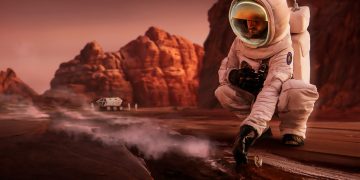Introduction
In today’s fast-paced and competitive global market, the process of transforming research and development (R&D) into commercialized products and services has become more complex and resource-intensive than ever before. While companies and research institutions traditionally followed a closed innovation model—where research was kept in-house and commercialized through proprietary means—the rise of open innovation (OI) has significantly altered this approach. Open innovation, as introduced by Professor Henry Chesbrough, advocates for the exchange of ideas, technologies, and knowledge across organizational boundaries to accelerate innovation and commercialization.
Incorporating open innovation into the commercialization of research outcomes offers companies new avenues for accessing external knowledge, collaborating with diverse stakeholders, and accelerating the translation of scientific discoveries into market-ready products. This article explores how companies can leverage open innovation to drive the commercialization of research outcomes, examining the role of partnerships, crowdsourcing, and external collaborations, as well as the challenges and opportunities associated with OI.
1. What is Open Innovation and Why Does It Matter?
Open innovation refers to the process of actively seeking and utilizing external ideas, knowledge, and technologies to complement and enhance internal research and development efforts. In contrast to closed innovation, where companies keep their research strictly internal, open innovation allows organizations to tap into external sources such as universities, research labs, startups, and even individual innovators, to accelerate innovation and bring new products to market faster.
- External and Internal Collaboration: Open innovation involves a combination of external collaborations with partners and the integration of external technologies with a company’s internal R&D. This approach enables companies to access a broader pool of resources, expertise, and perspectives, facilitating quicker problem-solving and innovation.
- Business Model Innovation: Companies adopting open innovation can use it not only to innovate in product development but also to innovate in their business models. Through the use of external partnerships, licensing arrangements, and joint ventures, businesses can create new revenue streams and better meet customer needs.
Open innovation plays a critical role in bridging the gap between academic research and commercial products by fostering collaboration, creating networks of expertise, and reducing the time it takes to bring research from the lab to the market.
2. The Key Benefits of Open Innovation in Commercializing Research
A. Accelerating Time to Market
One of the most significant benefits of open innovation is its ability to reduce the time it takes for research outcomes to reach the market. By collaborating with external organizations, companies can quickly access complementary technologies, resources, and expertise that can expedite the product development process.
- External Knowledge and Expertise: Open innovation allows companies to partner with universities, research institutions, and independent inventors who may have already solved certain technical challenges or developed innovations that could be incorporated into a company’s product pipeline. This accelerates the R&D phase and shortens the commercialization timeline.
- Parallel Development Tracks: Instead of relying solely on internal R&D resources, companies can pursue parallel development tracks by collaborating with external partners. This reduces the need for internal teams to “reinvent the wheel,” allowing the company to rapidly build upon existing innovations and push them toward market readiness.
B. Accessing External Funding and Resources
Research and development can be costly, and many companies may face resource constraints that limit their ability to fully commercialize promising innovations. Open innovation provides a means of securing external funding and resources by forming strategic partnerships, joint ventures, or collaborative research agreements.
- Crowdsourcing and Innovation Contests: Companies can use crowdsourcing platforms or innovation challenges to invite external innovators to contribute ideas and solutions. This can be an affordable way to tap into diverse sources of innovation while engaging with a broader community of problem-solvers. For example, large companies like Procter & Gamble (P&G) and NASA have successfully used crowdsourcing platforms to generate new ideas and find solutions to difficult problems.
- Partnerships with Venture Capitalists: Through open innovation, companies can attract venture capitalists and investors who are interested in funding breakthrough technologies that have the potential to revolutionize industries. Such collaborations can provide much-needed financial backing and guidance for bringing new research-driven products to market.
C. Expanding Market Reach and Customer Base
By engaging in open innovation, companies can also expand their market reach by creating products that meet the needs of diverse customer segments. Collaboration with external partners often brings new insights into customer needs, preferences, and emerging trends, enabling companies to better target their products to specific markets.
- Co-creation with Customers: Open innovation can involve direct collaboration with customers, who contribute their knowledge and feedback during the product development process. By integrating customer insights into the R&D phase, companies can design products that are more likely to meet market demand and enhance customer satisfaction.
- Access to New Distribution Channels: Partnerships with external organizations may also provide access to new distribution networks and sales channels. For instance, research organizations or academic institutions may have established relationships with key players in specific industries, helping companies leverage these connections to reach new customer bases more efficiently.
3. Key Strategies for Implementing Open Innovation for Commercializing Research
To effectively utilize open innovation in the commercialization of research outcomes, companies must employ specific strategies that ensure the process is efficient, transparent, and beneficial for all parties involved.
A. Establishing Strategic Partnerships
One of the most common approaches to open innovation is the creation of strategic partnerships between companies, universities, research organizations, and startups. These collaborations enable companies to access external expertise and technologies while sharing the risks and costs of innovation.
- University-Industry Collaboration: Universities and research institutions often lead the way in scientific research, and their discoveries can serve as the foundation for new commercial products. Companies can partner with universities to co-develop technologies, sponsor research, or license intellectual property. These collaborations help bridge the gap between academic research and commercial application, ensuring that valuable discoveries are brought to market more quickly.
- Industry Consortia: Industry consortia, in which multiple companies collaborate on common research goals, are another effective way to engage in open innovation. These consortia allow companies to pool resources and share risks, particularly when developing new technologies that require significant investment.
B. Licensing and Technology Transfer
Licensing is one of the most direct ways for companies to commercialize research outcomes through open innovation. By licensing intellectual property (IP) from universities or other organizations, companies can accelerate product development and bring new technologies to market.
- Technology Transfer Offices: Many universities and research organizations have established technology transfer offices (TTOs) that manage the licensing of innovations and IP generated through research. Companies can work with these TTOs to license cutting-edge technologies and incorporate them into their product portfolios.
- Joint Ventures and Spin-offs: In some cases, companies may choose to form joint ventures or spin-offs with external partners to commercialize a particular technology. These arrangements allow both parties to benefit from shared resources and expertise while pursuing the development of new products or services.
C. Open Source and Collaborative Platforms
Open-source models and collaborative platforms are increasingly being used to foster open innovation and accelerate the commercialization of research. By making research findings and prototypes publicly available, companies can invite external contributions, refine ideas, and speed up product development.
- Open Innovation Platforms: Platforms like InnoCentive, NineSigma, and IdeaScale enable companies to post challenges or problems and invite solutions from a global pool of innovators. This democratizes the innovation process and allows companies to quickly access diverse perspectives and ideas.
- Crowdsourced Development: Companies can also use crowdsourced development platforms to engage external developers, designers, and engineers to help refine or improve their research outcomes. By making research findings available to a wider audience, companies can leverage collective intelligence to accelerate commercialization.

4. Challenges and Barriers to Open Innovation
While open innovation offers many opportunities for accelerating the commercialization of research, it is not without its challenges and risks.
A. Intellectual Property Concerns
One of the most significant obstacles to open innovation is the management of intellectual property. Companies must carefully navigate IP rights and agreements when collaborating with external partners, particularly in academic settings where research findings may be publicly disclosed.
- IP Ownership and Sharing: Clear agreements need to be established regarding the ownership of IP, how it will be shared, and how any resulting products or technologies will be commercialized. Failure to establish these terms upfront can result in disputes, delayed timelines, and missed opportunities.
B. Managing External Relationships
Building and managing external relationships in open innovation can be complex and time-consuming. Companies need to ensure that they select the right partners and align their goals to avoid misunderstandings or misalignments in objectives.
- Cultural Differences: Companies working with international or academic partners may encounter cultural and organizational differences that can hinder the innovation process. Effective communication, mutual respect, and transparency are essential to fostering successful collaborations.
5. Conclusion: The Future of Open Innovation in Commercializing Research
Open innovation is increasingly becoming a crucial strategy for companies seeking to drive the commercialization of research outcomes. By leveraging external knowledge, collaborating with diverse partners, and utilizing crowdsourcing and licensing models, companies can accelerate the development of innovative products and services. As the pace of scientific discovery continues to increase, the importance of open innovation in bridging the gap between research and commercialization will only grow.
Ultimately, companies that embrace open innovation can unlock new revenue streams, expand their market reach, and stay competitive in an ever-evolving global landscape. By fostering an ecosystem of collaboration, knowledge sharing, and mutual benefit, companies can transform scientific breakthroughs into tangible, market-ready solutions that benefit society and drive long-term business success.


















































Discussion about this post